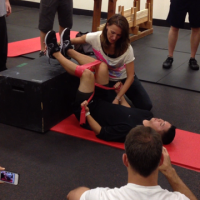
Can You Breathe Away Hamstring Tightness?
Everyone seems to have ‘tight’ hamstrings. The most popular stretch and one that has been with us since John F Kennedy’s exercise program was launched into schools is the straight leg hamstring stretch. There are standing, seated, and supine variations that are used by gym members on a regular basis.
The interesting fact is that athletes that religiously stretch their hamstrings – are almost always still tight – despite stretching their ‘tight’ hamstrings.
Hamstring tightness is interesting because overstretched hamstrings (over lengthened hamstrings) still elicit a feeling of tightness. In other words, the muscle group is already overstretched and since this elicits protective neural tension, athletes then think that they need to stretch their hamstrings. And they do – they are stretching an overstretched muscle group – weird, no?
Your hamstrings are trying to ‘hold on’ to your hips – preventing anterior pelvic tilt. It is important to note that feeling the stretch behind the knee is a result of overstretching the sciatic nerve. Hamstring tightness is often neural tension – not muscular tension.
Athletes who exhibit an anterior tilted pelvis and overarched low back have over lengthened hamstrings and will continue to feel ‘tight’ unless pelvic alignment is restored. One of the best ways of restoring pelvic tilt is breathing.
The following study was recently released showing the immediate effects of a breathing intervention on hamstring tightness.
The Functional Movement System’s certification utilizes tactical breathing to improve the straight leg raise. About half the participants in my certification had an immediate improvement in the straight leg raise once they performed tactical breathing from the crocodile breathing position.
There are a number of different corrective breathing drills that athletes can utilize. The most important part of diaphragmatic breathing is a lateral expansion on the inhale. The diaphragm should descend on the inhale pressurizing the sides of the abdomen. This lateral expansion is what stabilizes the lower lumbar spine (L4/5).
The first breathing drill I take patients through is the 90/90 supine position as taught by DNS (Dynamic Neuromuscular Stabilization). The 1st image above shows Petra Valouchova (DNS instructor) taking someone through the breathing drill that you can implement before your workouts.
Assessment/Belly Breathing
First lay on your back with your legs supported at ninety degrees. Place your right hand on your belly and the left hand on your chest. Note what happens on the inhale. If you feel your neck tense up or your ribcage elevate on the inhale you have a dysfunctional breathing pattern.
Taking 15 breaths in this position focusing on breathing into the hand on your belly. You will inhale through the nose, and then exhale through your lips like you are blowing up a balloon. You can use a count of (4/4/4/4) which is called tactical breathing. A 3lb change plate can be placed on the belly for some resistance – just don’t force the inhale.
Tactical Breathing
Inhale 4 seconds
Hold 4 seconds
Exhale 4 seconds
Hold 4 seconds
repeat
Lateral Breathing
Next place your hands just below your ribcage and focus on expanding into your hands. Take 15 breaths into your sides with the tactical breathing count. This can also be trained by tying a band below the ribcage (banded breathing)
Stabilizing While Breathing
After your 30 breaths and a lateral expansion is achieved – you will lift your legs off the support and integrate the proper breathing pattern while stabilizing (1st image pictured). Don’t worry about the bands in the 1st picture. The final step would be active leg movement while keeping the back flat against the floor Kolar Wall Bug (shown below)
Related Resources
The Journal of Sport Rehabilitation: The Immediate Effects of Doming of the Diaphragm Technique in Subjects With Short Hamstring Syndrome: A Randomized Controlled Trial (link)
Recognizing and Treating Breathing Disorders: A Multidisciplinary Approach (link)
Mike Reinold (Hans Lindgren): Core Stability from the Inside Out (link)
Tony Gentilcore: BALLS IN YOUR PANTS AND BREATHING PATTERNS (link)
– Kevin Kula, “The Flexibility Coach” – Creator of FlexibilityRx™ – www.FlexibilityRx.com
Tags: active straight leg raise, core stability, diaphragmatic breathing, DNS, FMS, lateral expansion diaphragm, lower crossed syndrome, tight hamstrings
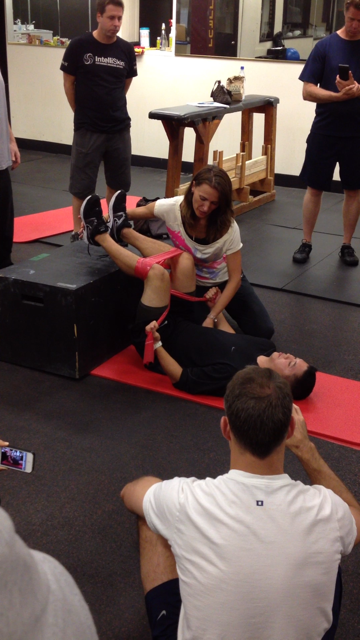
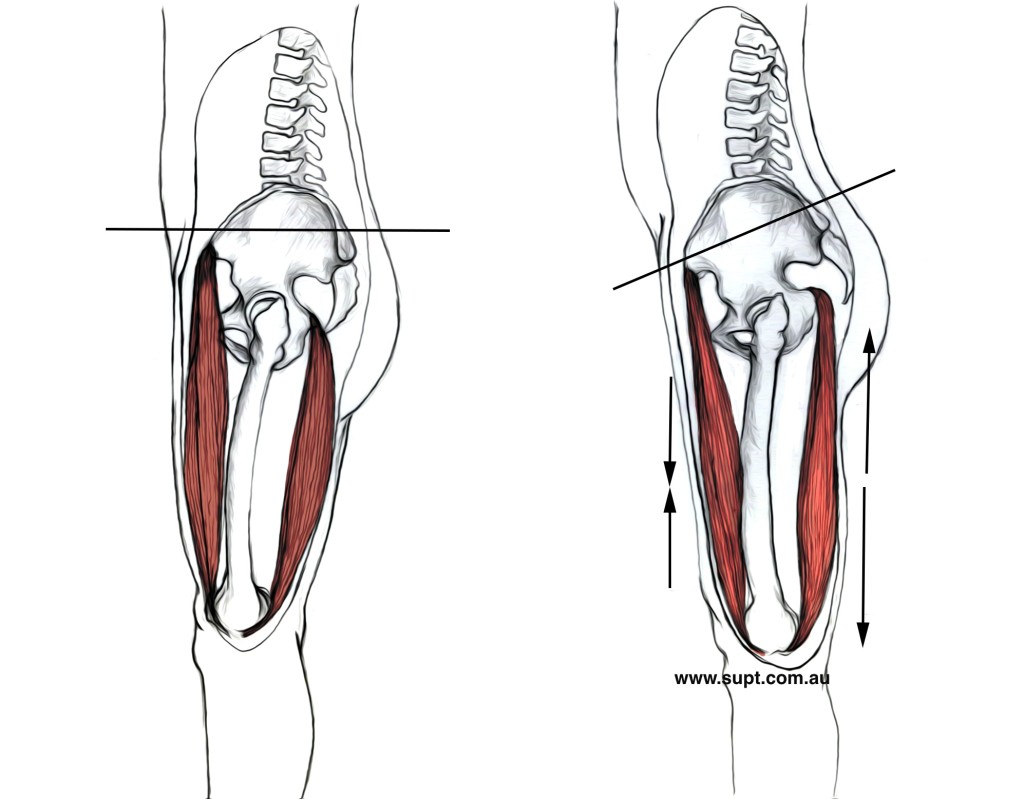
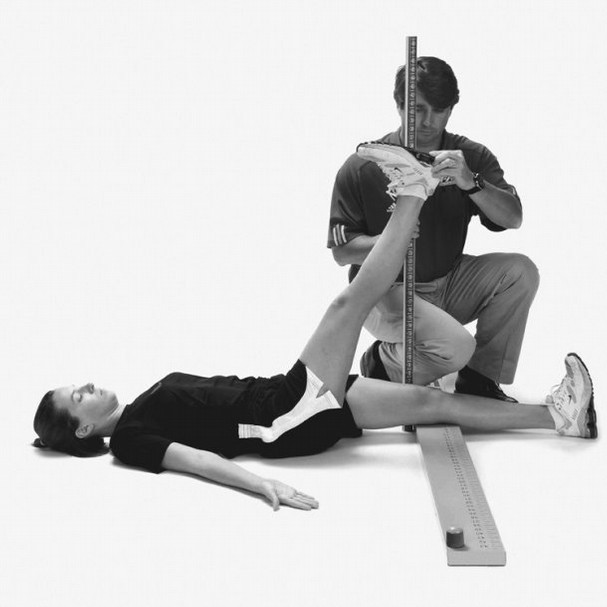
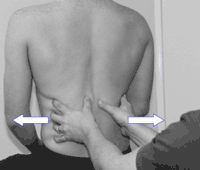
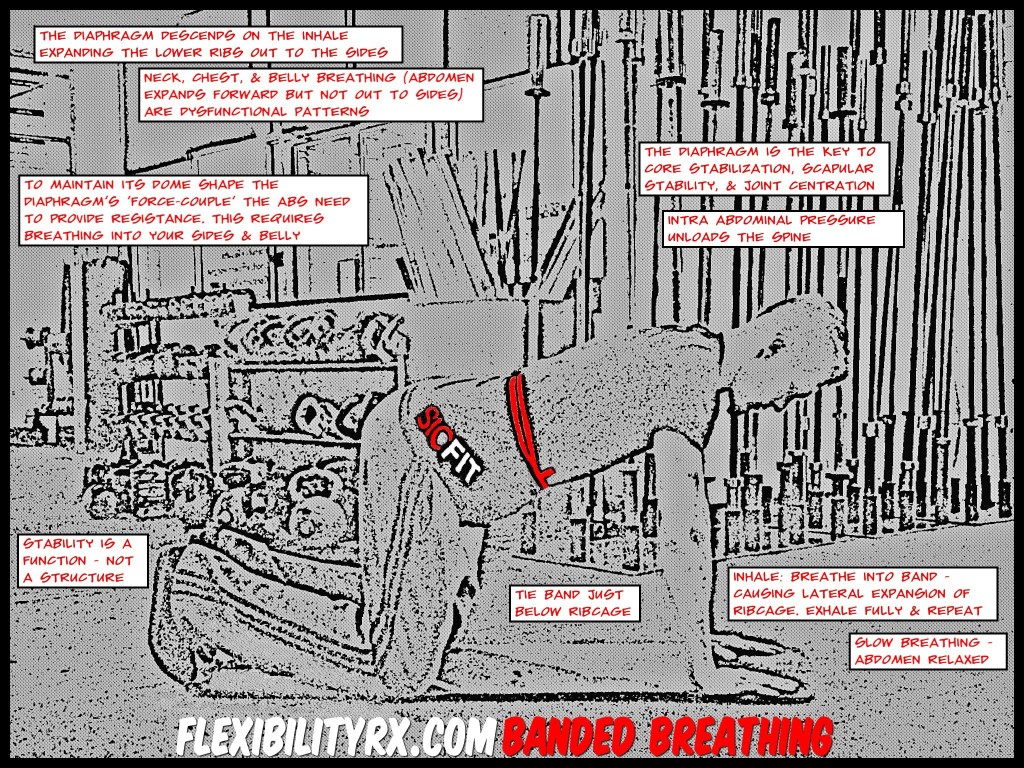
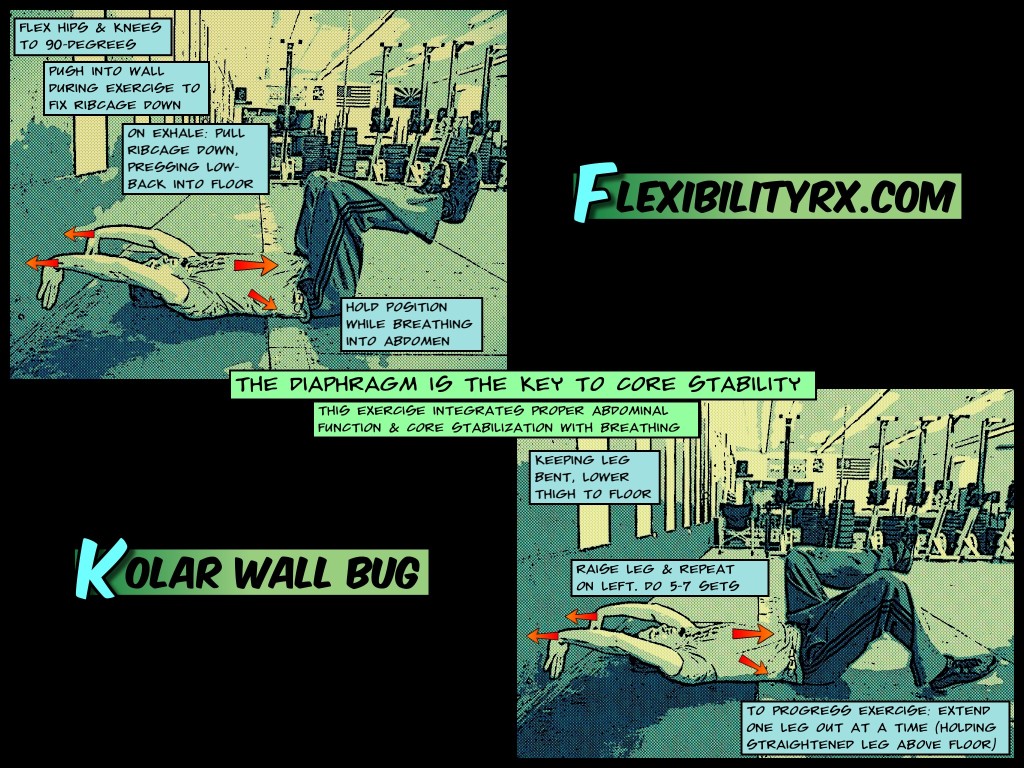
Leave A Reply (No comments so far)
You must be logged in to post a comment.
No comments yet